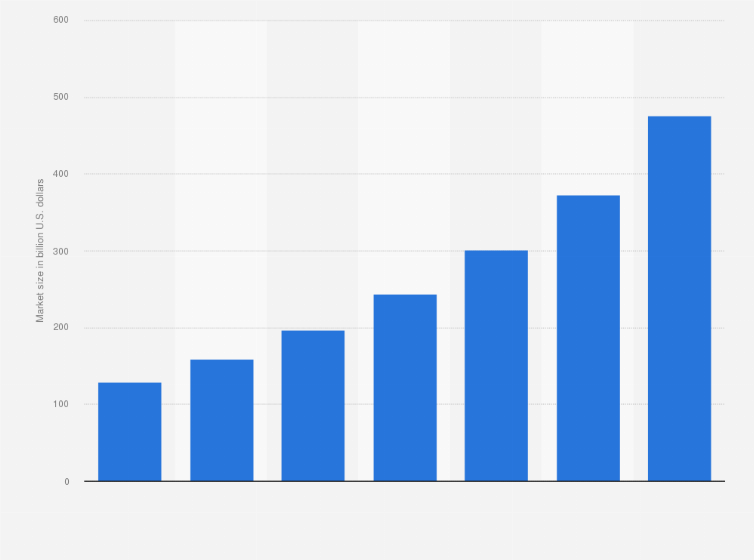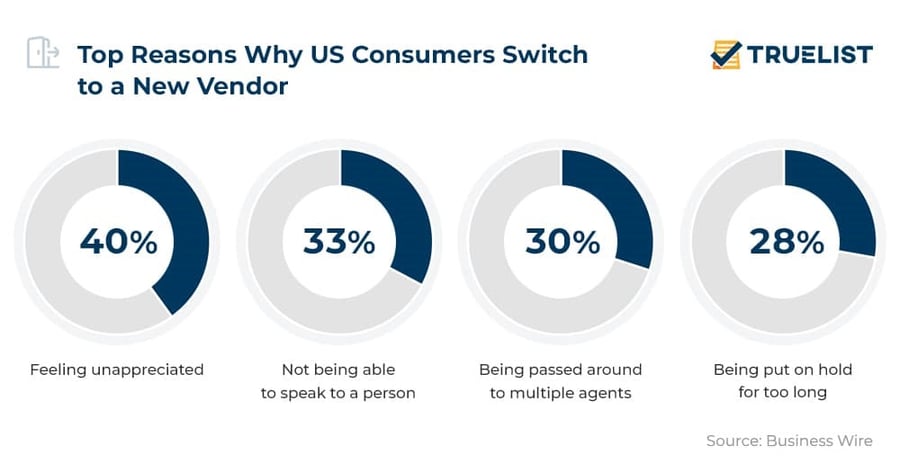
Dropshipping is one of the most popular ways to start an eCommerce business because it allows you to focus on building your brand while still making money with every order. However, that doesn’t mean you won’t need to invest funds into a dropshipping business. You may run into several costs, ranging from marketing tools to wages.
So, before you start building your dropshipping business, let’s go through the best ways to estimate any overhead you may need to factor in.
What is Dropshipping?
Dropshipping is a fulfillment method involving products moving directly from the manufacturer to the end customer. When a customer places an order on your store, that order goes to your product’s manufacturer — that supplier will take care of inventory and shipping for you.
The truth is that you don’t need to spend hundreds of dollars on expensive inventory. Most dropshipping businesses don’t have the time or money to invest in large quantities of merchandise. This makes dropshipping an easy method to get started with.
You only need to find a product, set up your online store, and let customers know about it. All of this can be done in a short period.
Here are some reasons why dropshipping is one of the best ways to start an eCommerce business:
- Resources or capital to invest in a storefront, warehouse, or contact center solution isn’t necessary.
- You get instant access to a market without going through any hassles.
- It’s possible to run your dropshipping business from wherever you want — at home or the office — without having to worry about finding a location for your store or dealing with landlords or property taxes.
- Your online business will be easy to scale up quickly.
- It allows you to test your ideas without having a considerable investment in inventory.

However, this does not mean there are no overheads whatsoever in dropshipping. Marketing is everything, which means that the only way to be successful with dropshipping is by promoting your business and scaling it up while making do with lower margins.
In other words, you will have to spend money on advertising and marketing because you need to get people's attention and make them aware of your products. You’ll need to spend money on paid ads, social media marketing, and SEO.
What are Overheads?
Overhead is the cost of running a business that is not directly related to selling goods or services. These can include labor, rent and utilities, marketing expenses, and other costs that are not directly related to making a sale.
Some of these expenses may be fixed (e.g., office rent), while others are variable (e.g., wages). Some overheads may be necessary for each product sold (e.g., shipping), while others may only apply to certain products.
Typically, overheads can be divided into four general categories.
- Administrative Overheads: These are the costs associated with running the business. These include analysis, accounting, and payroll costs. These expenses do not necessarily affect your bottom line, but they represent a cost you need to cover as part of your overall business model.
- General Overheads: These costs refer to all other expenses that are not directly related to selling products or services for your company. For example, if you have an office space that you regularly use for meetings and training sessions, it is considered a general overhead expense. General overhead costs be broken down into two groups: fixed and variable costs.
- Fixed Costs: These are ongoing expenses that cannot be changed easily without changing your business model or increasing your revenue stream significantly.
- Variable Costs: These are costs that increase or decrease depending on how much product is sold in a given period. For example, if you have a variable overhead of 10% for each sale, this will rise by 10% for every sale made after your first one. If someone buys something less often, they will spend more on their next order (since they've already paid for their initial purchase).
Overheads in Traditional eCommerce
In traditional eCommerce, the cost of goods sold (COGS) includes the cost of inventory and related expenses. Inventory cost consists of all costs associated with storing goods in stock. It includes storage and handling fees, insurance, taxes, and other operating expenses.
Warehousing is one of the essential overheads to store products at different locations. Warehousing costs include rent, utilities, and maintenance fees.
You need storage space for all your inventory, which takes up a lot of space. You also need a place to store your products while they aren’t being sold, which takes up even more space. The rental fees will also add up if you want to keep your storage facility open 24 hours a day or 365 days a year.
On top of that, you need someone to manage your warehouse, which means you will have to cover their salary and other expenses such as rent, maintenance, etc.
Labor costs are also significant because they affect inventory turnover and sales per employee.
Estimating Overheads in Dropshipping
While your dropshipping business may not encounter all of the costs mentioned above, several costs are still typical in this business model.
High Marketing Budget — Required!
Dropshipping is a low-margin business; the only way to succeed is to scale up. You need a high marketing budget and extensive investment in online advertising to achieve a high sales volume.
If you're looking to build a dropshipping business, you need to be prepared for marketing overheads. There are several different marketing costs expected in dropshipping businesses.
- Marketing Tools: Since dropshipping is predominantly marketing-driven, you will need to invest heavily in marketing tools for graphic design and landing page creation. Platforms like Instagram and TikTok may also require you to invest in models and video production that can demo your product for you.
- PPC Advertising: With pay-per-click advertising, you can reach customers at their decision-making stage and keep them engaged with your brand via email marketing or social media posts.
- SEO: Optimizing your online business for search engines is essential if you want to rank well on Google, Bing, Yahoo, and more. While you can implement SEO practices into your site for free, you may need to utilize a paid tool that makes it easier to scale your efforts.
- Affiliate Marketing: Implementing an affiliate marketing program can help drive traffic back to your site. By encouraging loyal customers and influencers to spread the word about your brand for commission, you can get more eyes on your store — and boost sales.
Brand Your Way to Success
You know the saying: Branding is everything. In the dropshipping world, it's even more vital.
Branding is one of the most important ways to set your dropshipping stores apart in a sea of others selling the same product.
It's not just about having a fancy logo and name on your website. It's about how you present yourself as a brand that people can trust.
Branding your business is not the same as traditional marketing. It's one of the most effective customer retention strategies and helps your business diversify into more product lines, bring manufacturing in-house, and increase your margins (since people pay more for a brand they trust).
For example, established brands like Nordstrom or Apple attract customers that will pay more for what they know is quality and integrity.
People will also trust that you're going to deliver on your product promises because they've seen your reputation before.
The same thing applies when trying to differentiate yourself from other sellers on Amazon — even if your products are exactly the same as theirs!
Build Your Customer Support Team
To be successful with dropshipping, do not rely entirely on your dropshipping supplier for support. Instead, invest in your own in-house call center that can offer an omnichannel presence and be responsive to customer inquiries.

If consumers can get in touch with you directly and easily, they'll be more likely to do so. And if they need help or assistance with anything, then you've got a much better chance of earning their repeat business. This pays for itself over time through improved brand image, repeat purchases, and increased sales.
So many dropshippers are using this approach that it's becoming difficult for manufacturers to create their own in-house customer support teams because they cannot compete with the cost savings of outsourcing.
Research Well
You must do intensive market research before finalizing products for your dropshipping store, as it can make or break your business.
Once you have a product and the price point is right, you may find that there is little demand for it and that it will not sell. If this happens, there is no point in paying for the overhead of manufacturing and marketing when there are no sales.
If you find any products selling well but with considerable overheads, it could mean that there is room for improvement. You might want to experiment with different prices or offer more free shipping options so customers will be more inclined to buy from you.
It's also important to consider how much money you want to allocate to overheads. Suppose you decide that too many expenses are involved in running a dropshipping business. In that case, it is better to focus on setting up a single-product dropshipping store rather than risk losing money by selling multiple products.
Conclusion
Dropshipping is a growing trend in online businesses. It allows individuals to sell products online without the hassle of having to build and maintain an inventory.
In general, dropshipping seems to be the perfect business model for entrepreneurs who want to start a small business and make money from it quickly. In general, it gives you the freedom to start with minimal investment — especially when you decide to build an online store yourself.
If you're a beginning entrepreneur, it's essential to consider all aspects of your business before moving on to the next steps. When starting a dropshipping store, it's important to plan ahead.
We recommend taking time to research what you want to sell before investing your time and money in the business. Think about the audience, your inventory management, and search engine optimization. Once you have an idea of what you need, it'll be much easier for you to make your dropshipping store a reality.
When running a dropshipping business, you don't want to find yourself in an impossible situation. Always place the customers first with the best prices, excellent customer service, and clear shipping policies. The more profitable your dropshipping business is for you, the easier it will be to offer the ultimate shopping experience.





Leave a reply or comment below